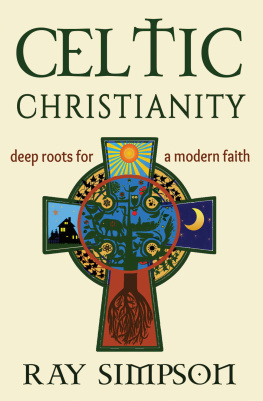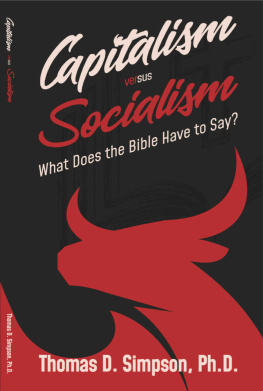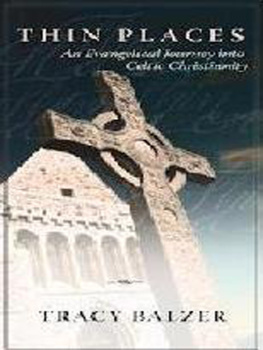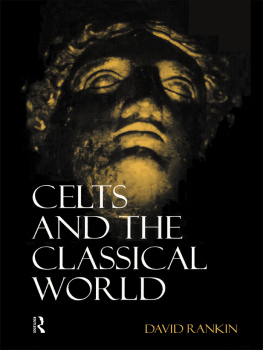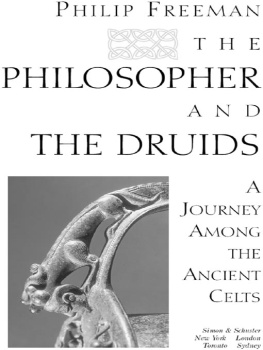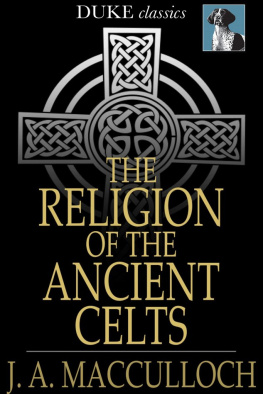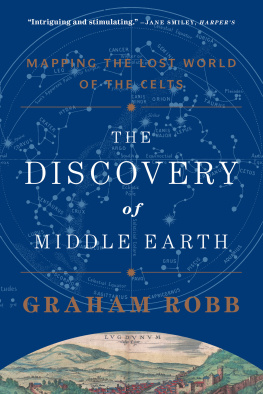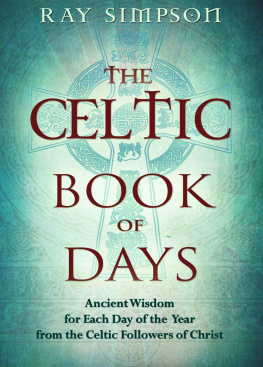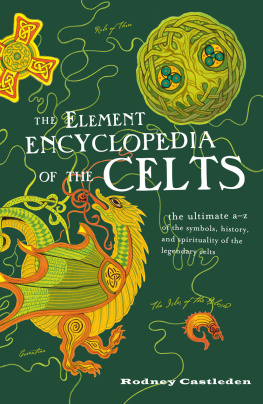Celtic
Christianity
deep roots for a modern faith
Ray Simpson

Copyright 2014 by Anamchara Books, a division of Harding House Publishing Service, Inc. All rights reserved. No part of this publication may be reproduced or transmitted in any form or by any means, electronic or mechanical, including photocopying, recording, taping, or any information storage and retrieval system, without permission from the publisher.

Anamchara Books
Vestal, NY 13850
ISBN: 978-1-62524-058-3
ebook ISBN: 978-1-62524-059-0
An earlier version, Celtic Spirituality , was first published in the UK by Kevin Mayhew.
Scriptures and additional materials quoted are from the Good News Bible 1994 published by the Bible Societies/HarperCollins Publishers Ltd UK, Good News Bible American Bible Society 1966, 1971, 1976, 1992. Used with permission.
Acknowledgements
I dedicate this book to the Christian community of Bowthorpe, Norwich, which I served as founding minister for seventeen years, and which offered me a pattern of worship and work, prayer, and love that enabled me to respond to the callings of God on my life.
In particular I owe an enormous debt to Frances, Helen, Maisie, and Sue, who have given unstinting help with typing; and to my sister Sally, who has enabled space to be kept in my life so that I could fully concentrate on writing this book.
I thank my friends Michael Mitton and Russ Parker for reading the first draft and for making useful suggestions, and Russ for writing the Preface. I am also grateful to Kate Tristram for allowing me to use the library at Marygate House, on the Holy Island of Lindisfarne.
Foreword
It is the best of times, it is the worst of times. This opening line from Charles Dickens book, A Tale of Two Cities , describes very well the maelstrom of spiritual upheaval through which the Church is currently journeying. At the heart of some of this turbulence lies both a question and a quest. The question is whether the Church has become spiritually bankrupt and has outrun its usefulness. The quest is an older and deeper issue and has to do with the need for renewal, relevance, and roots. There are those who have said that the Church has become powerless and have consequently looked elsewhere for their experience of signs and wonders; to some extent this has given rise to an amorphous collection of spiritualities commonly generalized under the heading of the New Age. Other critics reflect on the apparent inability of the established Church to adapt its ways and teachings to meet with the modern concerns of ecology, love of the earth, and changing lifestyles with its resurgence of desire for true community.
The concern for roots gives expression to the age-old need to belong; to be cradled and connected by a faith which not only links a person with their history and culture but also provides a meeting place between the earth and heaven. This latter is surely why we are witnessing a growth in pilgrimage to holy places, be it Lourdes or the Vineyard church in Toronto, where Gods power and presence have been located.
It should not surprise us therefore to find a growing interest in the life and witness and teaching of the Celtic Church because it weaves together all the strands of this quest. Here was a Church that was familiar with the powers of the Holy Spirit and which showed a friendly dynamic in its evangelism and witness to the pagan old agers of its day. It was a Church without walls, which wrapped itself in and around the community. The Celtic Church blended liturgy with imagination and hailed its poets and singers within a discipline of holiness and helps which endeared it to its people.
Ray Simpson has provided us with a feel and a glimpse of a spirituality that is now re-emerging from the mists of time to which an all too rigid Church had consigned it. His book helps us to get beyond nostalgia for all things old and enables us to appreciate their way of being. He then challenges us to learn the lessons and principles from that Church which was the first charismatic explosion of the faith in these islands and then find ways to apply them for our day. It is my belief and hope that Ray has given us a good resource to learn from our Celtic saints a way of being renewed in Christ so that we too can continue our journey of faith for the love of God and others.
Russ Parker
A Timeline
of Celtic Christianity
Long before conflicts so tragically divided Christianity, the Celtic Church came to flower. It existed from the fifth to the twelfth centuries. The Celtic churches were orthodox in faith but diverse in practice, evangelized and maintained unity through friendship, respected womens gifts, felt spiritually linked to creation, celebrated God through all the senses, inspired multitudes to holy lives of prayer, were bathed in the supernatural, and kept learning alive through the Dark Ages.
The mission sent from Rome in 597, which reflected the civil service model of the Roman Empire, worked in harmony with the Celtic mission at times, but gradually the regulations of the Roman Church were enforced, the clergy became dignitaries, the Church grew less biblical, less charismatic, less close to the soil and to the poor. Much that was good and necessary was brought in, but comfort, pomp, and uniformity assumed too large a place.
bce The Celts, known as the fathers of Europe, emerged from Europes heartlands as a distinct race, but under the Roman Empire retreated to western fringes such as Gaul, Britain, and Ireland.
ce (after Christ)
40/50 St Paul converts the Celts of Galatia.
43410 Romans occupy southern BritainChristianity is established with a few bishops.
313 Once the Emperor Constantine makes Christianity official, the Church slides into immorality and declines, but a countermovement of Christians in deserts models holy lives.
390 Inspired by the desert Christians, Martin in Gaul and his apprentice, Ninian in Whithorn, Galloway, found mission communities of radiant Christians.
410 After the last Roman troops leave Britain, Anglo Saxon invaders destroy most remaining churches, except in the western fringes.
435 In Ireland, a century of evangelism begins by Patrick, Brigid, Brendan, Columba, which leaves a land of saints shaped by large communities of faith, with homegrown leaders.
450 In Wales, and Cornwall, a century of planting mission communities inspired by the desert Christians, by Germanus, Illtyd, Samson, Petroc, David, leave them lands of faith.
560 Columba spreads mission communities in Iona and Scotland.
591 Columbanus and others found mission communities throughout Europe.
597 The Bishop of Rome sends a mission team led by Augustine, which eventually develops a national organization and a spirituality that seems oppressive to the Celtic churches.
635 Aidan is sent from Iona to start a mission to the English from Lindisfarne. With its partner community at Whitby, led by Hilda, it sends missionaries to the East (Cedd) the Midlands (Chad) and further south.
664 The disastrous Synod of Whitby deals with the growing differences between Roman and Celtic ways by enforcing Roman regulations, e.g. about the date of Easter. Cuthbert and Hilda sadly accept these for the sake of unity, but maintain the Celtic spirituality. The Roman regulations are accepted in 696 in northern Ireland, 716 in Scotland, 755 in Wales.
690 The Golden Age of study and art. The Lindisfarne Gospels are inscribed, and later the Book of Kells .
Next page
